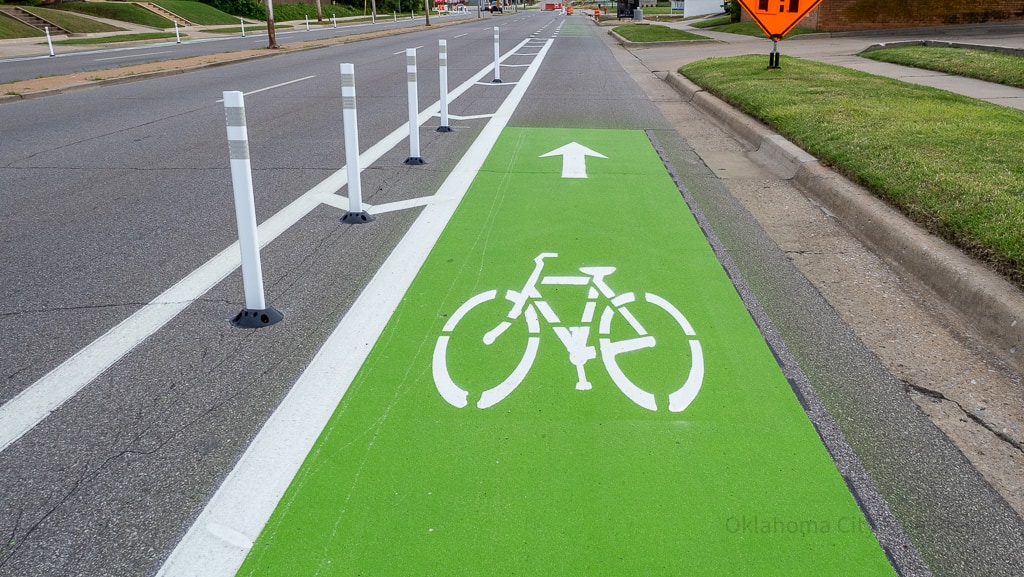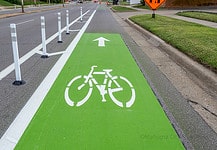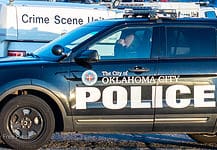Last Updated on August 6, 2023, 2:46 AM | Published: July 16, 2023
OKLAHOMA CITY (Free Press) — Despite The City of Oklahoma City’s efforts to dramatically expand the availability of dedicated bicycle lanes and bike-based infrastructure, some in the local cycling community don’t believe that enough has been done by the City to orient drivers about how to share or navigate the new lanes.
And at least one dangerous situation for a cyclist using the new bike lanes on Classen seems to have resulted from such a lack of public driver education about the lanes.
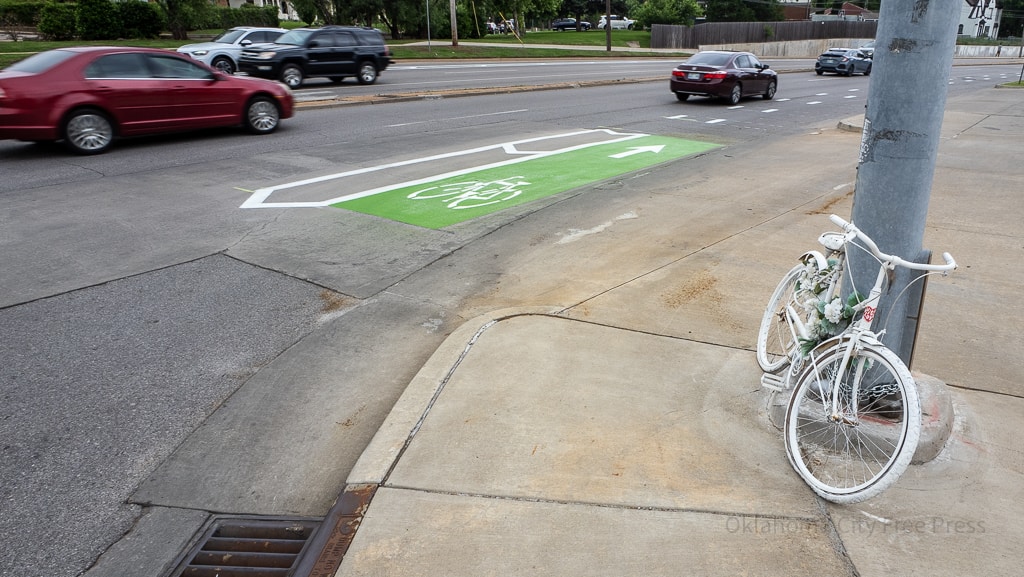
Changes for drivers
MAPS 4 laid out $22 million in funding specifically aimed at “the construction of bicycle lanes and related bicycle facilities,” paying particular attention to guidance suggested by the BikeWalkOKC plan for increasing pedestrian and biking safety around the city.
With so many cyclist-focused city projects now taking shape all over town, there are more opportunities than ever for motorists to learn how to share the road with bicycles.
But as some of these projects change or modify the driving lanes as well, particularly on Classen Boulevard where lanes were reduced from six to four between NW 10th and NW 16th, some biking advocates say the city hasn’t done enough to educate motorists about how the changes impact them.
“I have nothing but respect for the city workers making this work happen,” said local biking advocate Shawn Wright, “but communication all around on bike lanes going in needs to improve by a lot.”
New Classen bike lanes
The city’s most visible and heavily trafficked new bike lanes now line Classen Boulevard between NW 10th Street and NW 16th Street, with the effort to provide a safer, clearly marked route for cyclists while reducing the number of car traffic lanes from six to four.
Though the project was announced shortly before breaking ground, there was very little messaging from the city to let the driving public know of the necessity of the new lanes or how to interact with bikers using them, leaving cyclists themselves to demonstrate their use to motorists in real time.
“I’ve been riding them every day to and from work,” Wright said. “I’m planning to use them every day going forward for general awareness. I want drivers seeing that they are used.”
Despite efforts to demonstrate the safe and regular use of the new lanes, some drivers are clearly still confused.
For instance, the motorist that pulled into the pylon-protected bike lane behind Wright on the evening of July 8th and drove in the bike lane for blocks, causing Wright to pull off quickly and let the car pass.
He documented the moment, as he often does, in a YouTube video showcasing his rides around the city.
When asked if he feels like the city has done enough to inform drivers of how to identify and respect these kinds of bike-only lanes and road-sharing measures, Wright was unequivocal.
“Definitely not yet,” he said.
Loose connections
With the Classen bike lane renovations wrapped into the construction of the city’s new Bus Rapid Transit system, these cycling infrastructure improvements were pushed to the front of the line, well ahead of the other upcoming biking/walking expansions laid out in MAPS 4 and BikeWalkOKC.
Unfortunately, that means that the biking improvements on Classen between 10th and 16th don’t yet connect to comparable improvements on neighboring streets.
“Probably the biggest issue right now is connectivity at 10th,” Wright said. “At 16th, it’s more obvious, but down at 10th, it’s not clear where you should go once the lane is gone.”
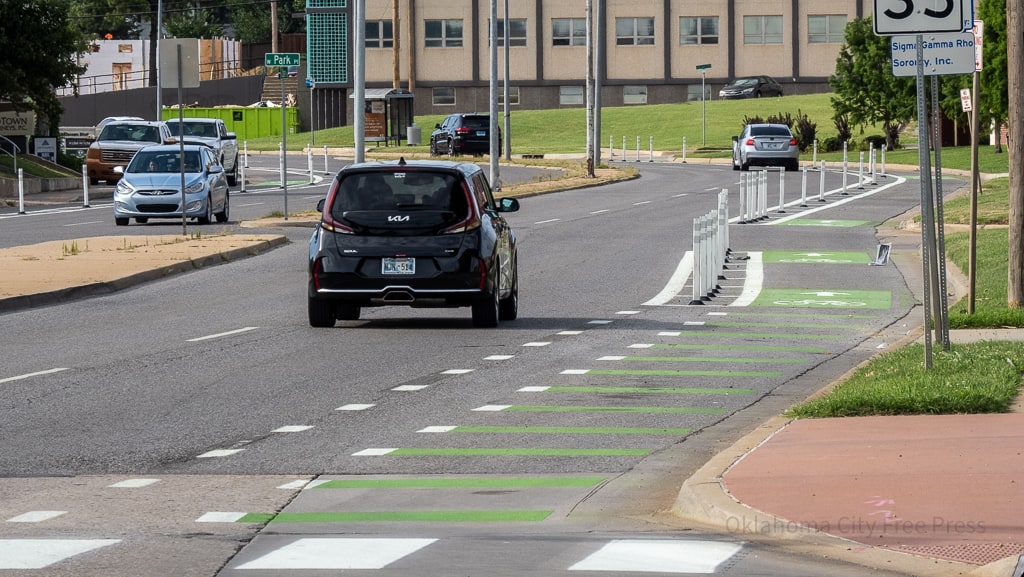
Similar concerns were voiced by cycling instructor and BikeOklahoma Government Chair Tony Carfang, who also singled out the route’s “sharrows,” in a configuration that many cyclists say still leaves them feeling unprotected. Sharrows are lanes marked to accommodate both cyclists and cars simultaneously.
“I think we’d still like to see more cross-town connection on 13th, for instance, between Classen and Broadway,” he said. “There’s just sharrows right now, which don’t do anybody much favors.”
For some in local government, even these new pylon-lined bike lanes are not enough.
“Let’s be clear, these lanes are ‘separated,’ not ‘protected,’” said Ward 2 City Councilor James Cooper, also an avid city cyclist. “I don’t believe for one moment that those plastic delineators provide protection. They provide separation. We need to, in subsequent funding opportunities like the next GO bond, move toward cycle tracks that are slightly elevated and we need to move toward true protection like bollards or planters.”
Driver’s education needed
Until those kinds of stronger protections are put into place to fully insulate the city’s bike lanes from car traffic, cyclist safety in lanes new and old will rely primarily on the deference and awareness of the driving public, and that will take a much greater city effort toward education.
“I do think we need to be doing much more as a city to provide education, as well as improving the type of protection we build,” said Ward 6 City Councilor JoBeth Hamon, another notably bike-riding city leader.
“I recently spoke with some staff about raising the profile on some initiatives they’ve been doing, like the Watch for Me OKC project as well as an upcoming Vision Zero campaign,” Hamon said. “They’ve had some good projects, but we think city leadership needs to prioritize and be more active in making sure those are getting the attention and resources they need.”
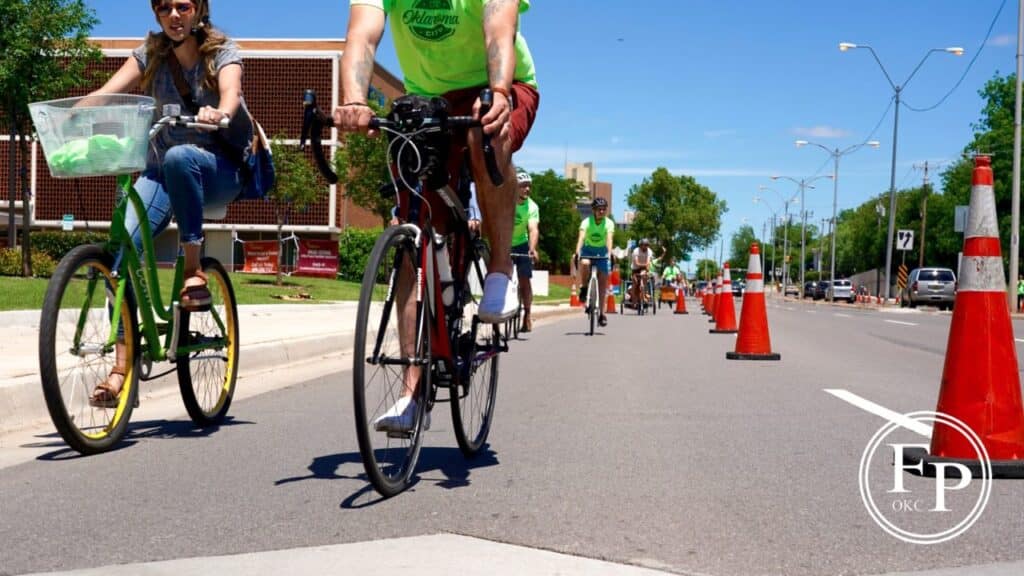
Over in Ward 2, Cooper said that similar concerns about the need for better driver awareness campaigns and education have been raised by both the ward’s traffic commissioner and planning commissioner, and there is a vote scheduled this week to procure an $800,000 Vision Zero grant for biking safety education.
No matter how much effort is put into biking improvements on existing streets, however, it’s Cooper’s belief that, though the burden of awareness rests on car drivers, true, effective cyclist safety in Oklahoma City will require a much broader reconsideration of our roads and our entire commuting culture.
“The education is going to have to come, truly, on the part of the drivers more than the pedestrians and the cyclists,” he said. “But I’ve come to believe no amount of education will make those of us walking and biking, and even, quite frankly, driving safer until we design our streets properly. Period.”
Brett Fieldcamp has been covering arts, entertainment, news, housing, and culture in Oklahoma for nearly 15 years, writing for several local and state publications. He’s also a musician and songwriter and holds a certification as Specialist of Spirits from The Society of Wine Educators.
